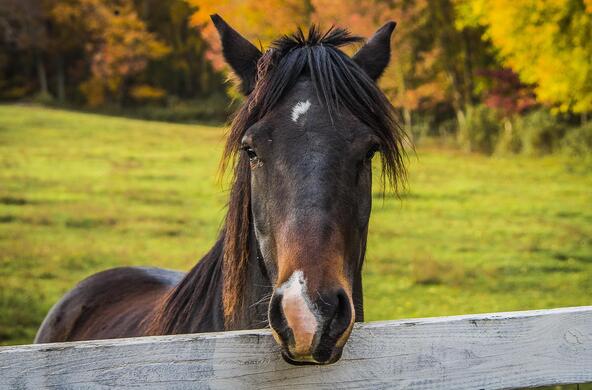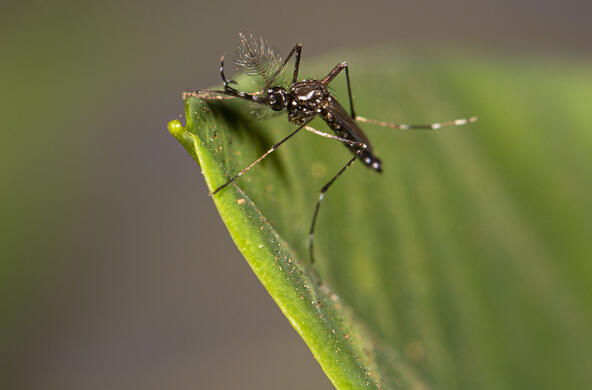Average temperatures have been rising in the United States and so, too, has the number of days humans are at risk of being bitten by a mosquito.
That’s according to a recent report by Climate Central, an organization founded in 2008 to accurately spread the word about the effects of climate change.
The study found significant increases in so-called “mosquito days” — defined by Climate Central as those having average relative humidity of 42% or higher and an average daily temperature range between 50 and 95 degrees — for much of country over a period of years.
What the report means for Cleveland is that length of time when people are at risk of contracting West Nile virus, the primary pathogen transmitted by mosquitoes in the area, has also grown.
Mosquitoes thrive in warm, humid air and the number of mosquito days has increased with the volume of greenhouses gases trapping heat in the Earth’s atmosphere and warming the planet, said Peter Girard, spokesman for Climate Central. In the eastern United States, the main contributor to the rise in mosquito days has been warmer temperatures, although humidity levels have gone up as well, he said.
The changes in weather have essentially meant an earlier start to spring and a longer-lasting fall, said Shannon LaDeau, senior scientist with the Cary Institute of Ecosystem Studies.
Climate Central looked at weather conditions from 1979 to 2022 and found that the number of annual mosquito days increased in 173 of 242 locations in the contiguous United States by an average of 16 days. Most of the 61 places where the number of mosquito days actually went down were in the South, where temperatures often rise to levels that are not suitable for mosquitoes.
Cleveland’s number of annual mosquito days increased by 27, not quite cracking the top 10 largest gainers. The two places with the biggest increases in mosquito days are in California. Santa Maria had 43 more days and San Francisco had 42 more days.
State College, Pennsylvania, is third on the list at 33 days, followed by Seattle-Tacoma, Washington, at 32, and Manchester, New Hampshire, at 31.
West Virginia communities Clarksburg-Weston and Wheeling each have 28 more mosquito days.
The Southeast region has the most annual mosquito days at 218, followed by the South, 184; the Ohio Valley, 146; the West, 132; the Northeast, 129; and the Upper Midwest, 112.
A majority of the 55 locations that experienced an increase of 21 or more mosquito days annually are either in the Ohio Valley region, which includes Cleveland, or the Northeast.
Mosquito populations are determined by a variety of factors, LaDeau said. Biologically, one would expect more days of warmer weather would result in larger populations, but quantifying that would be very difficult “unless you had really regular surveillance,” she said.
The Cuyahoga County Board of Health places traps around the county to collect mosquitoes to see if there is evidence of West Nile, but the volume of mosquitoes is not counted, said board of health spokesman Kevin Brennan.
A report by insuranks.com, a website to educate insurance shoppers, does not list Ohio in the top 10 mosquito hotspots in the state, nor is the state among the to 10 least mosquito-prone states. The rankings are based on average temperature and rainfall, mosquito species, West Nile cases in 2022 and Google searches.
And when it comes to cites where mosquitos are of greatest concern, as determined by Google searches “related to mosquito prevention,” Cleveland is not in the bottom or top 10, according to insuranks.com.
Along with temperature and humidity, other factors that spur the growth of mosquitoes include the volume of rainfall. Heavy rains can cause water to pool and stagnate, creating conditions for mosquitoes to thrive, LaDeau said.
LaDeau said a moderate drought should not have much of an effect on mosquito populations. A severe drought can drive the numbers down, although they can quickly return when it rains again.
There are more than 200 species of mosquitos in the contiguous United States, but most are harmless, according to Climate Central. LaDeau said there are two species most likely to bite people in the Cleveland area. One can transmit West Nile virus, but only after first feeding on a bird that has the pathogen and then biting a human. Only the female mosquito bites as it needs blood to make its eggs.
Also found in the Cleveland area is the tiger mosquito, LaDeau said. The pest is capable of transmitting dengue, zika and the chikungunya viruses, she said, but they have been not known to do so in Cleveland as the threats only exist if there are people in the area infected with those pathogens. The tiger mosquito must first bite an infected human before being able to transmit the virus to another human.
The yellow fever mosquito, which is found mostly in South and Central America, also inhabits southern Florida and is capable of transmitting dengue. And if you go to a beach on the East Coast you may encounter the salt marsh mosquito, which is less associated with spreading disease and more with annoying tourists.
Mosquitoes can breed in tires, birdbaths and open containers found in backyards and urban settings. Those hatching in natural, wetland habitats are less likely to pass along pathogens because there are fewer people than animals to bite.
It can take three days to a week for a mosquito egg to become an adult, LaDeau said, after which it will probably live in the wild for another week on average, although they have been known to live in a laboratory setting for up to two weeks. The more energy a mosquito exerts to feed itself, the shorter time it will live.
Ladeau said that with all other things being equal, people are more likely to encounter a mosquito in the Southeast United States where there are more mosquito days and where populations survive the winter and build upon themselves.
In some places temperatures can get so hot that it becomes inhospitable for mosquitoes, LaDeau said. But then people aren’t going to be comfortable in those conditions either.








